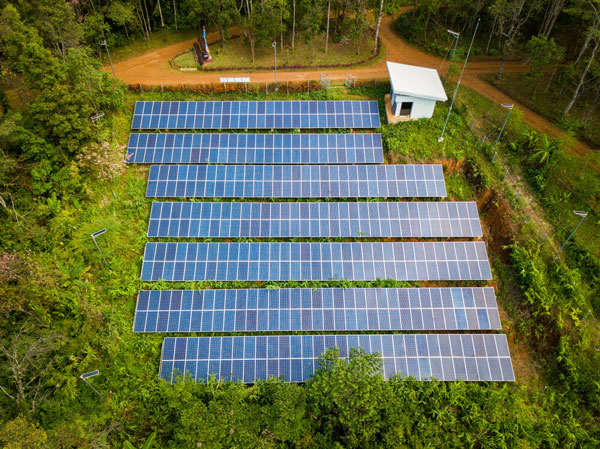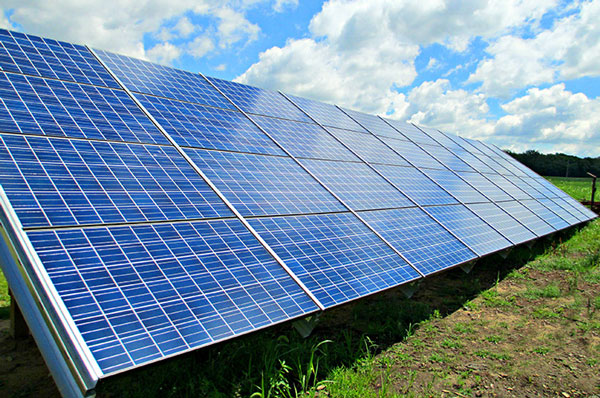Agricultural Water Pumping
Solar-powered water pumping is a great solution for agricuture in remote areas, where having access to electric sources is not an option for farmers in many case. This system is a great sustainable solution for irrigation, which is very important for cultivating any crops.
Installation Costs and Operation Costs
Solar water pumps are more cost-efficient in terms of installation than fuel type systems. Because there are no further fuel usage costs and little maintenance required to keep it functioning as needed, it is a financially practical way of work for many remote farmers. Operationaly, these systems are much cheaper in areas where diesel fuel is hard to get or is overpriced.
Components and Set-Up of the System
Solar panels are installed to attract the sunlight to turn it into electric energy, which is controlled by pump controller and transferred by water pumps to its final destination. Sometimes, storage tanks are installed along the whole system to hold water on cloudy days or at night. The set-up involves arrangeng the panels in such a way that they get the needed amount of sunlight, attach them to the control panel and make sure the water pump is transferring efficiently.
Impacts on Selected Water Pumping System
Solar pumps are a great input because this solution makes it much easier and less of work for the farmers to constatnly water the crops. In their turn, the well-watered crops are usually more yield heavy and more flexible for the farmers. With such pumping solutions, the water brigning and watering schedules might be easily organized by the farmers, so they could increase the health of the crops by reducing water intolerance. At the same time, solar pumps do not generate any pollutants, which are so common for diesel spills that are in fact very harmful for both soil and water.
Scalablility
Amount of the solar panels might be gathered and installed according to the need of the farm. They might be uprooted and taken away or vice versa, added to increase the farm size in the areas where diesel water pumping is offered as an input, which is generally a less common situation.
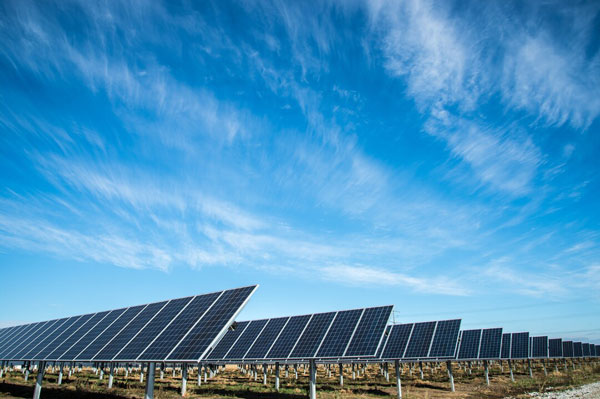
Telecom Services Electricity
Solar power is probably the hottest innovation in the field of telecommunications in remote areas. Not only can it provide a reliable power supply, but it can also save on costs of diesel fuel and power line installation and maintenance.
Problems of Telecom Power Supply in Remote Areas
The power for telecom services in remote areas was primarily supplied either by the diesel fuel or solar power. The diesel generators are rather costly to run: they need a constant supply of this kind of fuel and, moreover, regular maintenance. Thus, they are both costly on fuel delivery and maintenance and not fully reliable for isolated area operation.Deployment of Solar Panels for Telecom
To deploy a solar panel, the panel should be placed on the telecom site, which is additionally very convenient. Plus, the systems are developed in particularly for meeting the consumption of the telecom equipment. The solar power arrangement consists of the solar panel, batteries and inverters for spreading the converted solar current into the AC.
Benefits of Solar Powered Telecom Services
Thus, using a solar battery for telecom can reduce the operational costs for the provider saving on limited fuel provision and much lower operational maintenance than diesel generators. They will not need any additional power line installation in this way, saving well on resources.
Integration with Existing Infrastructure
In addition to that, the current systems can easily integrated in the existing infrastructure when the collection of diesel generators. Generally, batteries and panels can be put next to the previously installed equipment and diesel batteries.Future-Proofing Telecom Services
Concurrently, the technology of solar energy is looking forward to a rapid development making the solar collectors more cost-effective and the technology of batteries less costly. Finally, adding a battery to a solar panel is generally easier to deploy than building a new power line.
Contributing to Sustainable Development Goals
Utilization of solar energy for such critically important facility as the telecommunication clearly contributes to the mitigation of the global climate change reducing the CO2 emission severely. In addition to that, it diminishes diesel fuel usage, reducing the levels of toxicity in both the air and the soil.
Home and Street Lighting
The main areas of implementation will be the implementation of solar lighting systems in homes and street lighting. The installation of the systems can be done via the traditional method. Solar lighting system comprise of LED lamps, solar panel, battery for storage and charge controller. Installation involves the positioning of the solar panel so that it can receive full sunlight and at the same time mounting the LED lamps as per the needed.
Benefits of using Solar Power in Homes
Households using kerosene lamps and candles will benefit as solar lights are smoke-free and less prone to catching fire. The enhanced lighting will make domestic chores at home like reading, cooking among others more exciting and productive. Productivity in homes will be improved since women, who are the majority, perform a substantial amount of activities, will be motivated to do the tasks they had not done during the day due to proper lighting.
Benefits in regards to street lighting
Solar lighting at the streets allows for off-grid power rather than relying on central power supply. Through the systems, streets will not experience any power shortage since the lights will not be connected to the grid and thus more secure for people. During the night, the lighting of public streets and market is very important since it provides the needs of citizens and prevents many probabilities of accidents due to darkness. Streetlights are equipped with PV/CD cell sensors that switch on the light at dusk and off at dawn. The kind of lighting is beneficial in that it saves on the economical use of energy.
Cost of operating the systems
The costs of purchasing the type of light compensates the high purchase with a long duration of low maintenance by not needing hut repair, replacements or oil and at the same time having its source of power that is energy saving. Public spaces like markets and streets will also have economic activities carried at night, prolong educational hours and reduce accidents airported after flooding the streets and towns. The lighting facilities can be relied upon for a longer period to give light throughout the nights of the economic use of light. The average life span of solar lighting ranges from five years and above with the possibility of exceeding ten years.
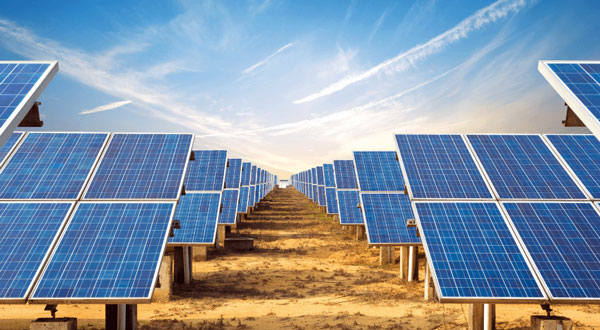
Refrigeration of Medical Supplies
Solar-powered refrigeration is indispensable for preserving medical supplies in remote areas. These systems keep vaccines and medications viable, as the drugs have to be protected by tight temperature controls. The present paper looks into the technology behind this type of cooling for the health sector, its advantages, and the problems it solves. The analysis also considers the installation process and energy supply.
Technology
Solar refrigeration is a complex of photovoltaic panels, battery storage, and a DC freezer or refrigerator. These systems are synchronically designed to turn sunlight into energy, store it in the batteries, and ensure the cooling process never stops. This is a basic requirement, as more factor for refrigerating temperature-sensitive medical supplies cannot be permitted.
Advantages
Solar refrigeration is extremely beneficial for healthcare institutions in remote areas, as it will be the only source of reliable electricity. Some community clinics and pharmacies use little to no cooling for the respective drugs due to the unavailability of energy. With solar power, the cooling process remains uninterrupted even during power outages. Since continuous cooling is guaranteed, the healthcare level rises exponentially, as most of the drugs and the vaccines will be viable. Moreover, the system is easy to install and easy to maintain, which is crucial for facilities that are hundreds of kilometers away from electronics stores and possessing no specialists.
Energy Supply
The installation is not automated, though: to set up solar energy, engineers need to choose the optimal sunlight area for solar panels and manage battery use at night. However, think about the maintenance of solar refrigeration is minimal, compared with selection process. The cost of facilities is high, but nurses can economize on purchasing fuel for constant generator operation. Additionally, solar cooling units are designed to consume low energy, which makes the cost efficient further. Last but not least of benefits is the reduced air pollution: if fossil fuels can be minimized, the greenhouse effect can be alleviated through refrigeration. It is essential to remember that such technologies help develop healthcare in the underdeveloped regions, preserve people’s lives, and secure the national security of the leading countries.
Educational Tool Power Supply
Solar power has had a multifaceted enchant on education in remote areas: whilst it has made modern educational tools work in the remotest locations, it has introduced a novel method to the conception of sustainability.
The Challenge of Powering Educational Tools in Remote Areas
Modern educational tools, such as computers, projectors, and even the internet are generally very demanding of electricity, with just minimal levels of availability. A common power source in remote areas is diesel-powered generators, which cannot be deemed financially effective in the long-term due to the expense of diesel. Additionally, as non-renewable sources of energy are becoming increasingly unpopular, novel approaches to electricity sources had to be devised for the operation of modern educational tools.
Setup of Solar Systems for Education
For the purpose of education, several components are required: solar panels in order to generate electricity, batteries to store the energy for later use, an inverter for conversion of solar energy into electricity, as well as additional systems and elements. The solar systems for education are tailored to be able to supply electricity to a particular set of educational tools throughout the day time when the school operates.
Impact on Learning and Teaching
The possibility to use educational tools which require electricity can be crucial for both studying and teaching. Teachers can employ beamer, slideshows, and other multimedia in their teaching, thus ensuring the delivery of the material is faster and more interesting for students. Pupils, in turn, gain access to a number of educational files available on discs, the internet, etc., which would not be possible in a low-energy educational setting. The change is especially important for STEM subjects, where credible experiments have to be conducted and computers need to be used for calculations.
Cost and Efficiency
As in the sphere of sustainability, the initial cost of solar power systems may be substantial, yet they prove cost-effective over time, due to the power source not being subject to fuel expenses and providing ongoing power. Operational costs of eventually, without scholarships, financing a diesel generator can take up a notable part of the budget which can otherwise go into teaching materials as well as training for teachers.
Sustainability and Community Involvement
Solar schools act as models for better sustainability in their communities, educating the children about the possibility of renewable sources of energy. As young people have already been brought up to prefer solar over diesel generators, electricity is made this way within the community, and further initiatives to convert to that are launched as well.
Scalability and Adaptability
It is also important to note, that solar systems can be both scaled and tailored for the additional requirements of new schools as well as increasing number of modern educational tools. Schools are often expanding, turning into boarding or technical educational institutions, and novel educational practices and tools are being devised, so flexibility in power supply is crucial for the ability to implement them.
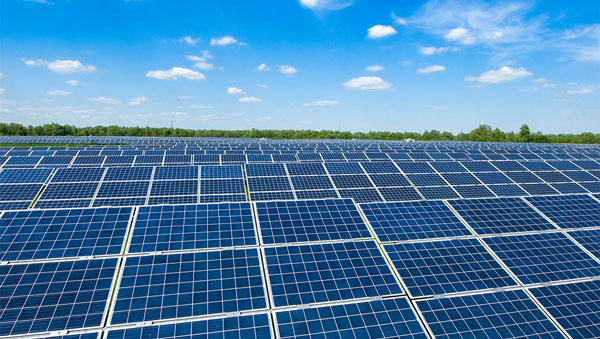
Emergency Services Energy
Solar power is vital for emergency services in remote areas where they should be operational at all times. Having a reliable source of energy at the moment when these services must corral all their power for saving people’s lives cannot be underestimated. The source is essential for such spheres as healthcare in general and medicine in particular.
Using Energy for Operating Necessary Equipment
Many devices and tools necessary for emergency services to save people’s lives require an uninterrupted power supply. Healthcare workers might need to use emergency lights to perform the surgeries or resuscitations in dark places, with no daylight available, or charge and turn on equipment that provides life support for the patients. Also, phones and gadgets can cease to work if not charged, blocking the communication between services that should work together to solve emergency cases.
Using Solar Energy to Create Reliable Source of Power Supply
Creating a solar power source involves mounting of solar panels, battery, and inverter. The number of batteries should be sufficient to provide power supply round the clock. An adequately designed system can also contain an additional battery, providing redundancy for critical loads. Since the system must remain operational at all times and to ensure the creation of redundant reserve, several batteries can be placed alongside each other.
Advantages of the Solar System
Solar panels are highly resistant to weather conditions, which is crucial for retaining power during storms and hurricanes or long absence of sunlight during the winters after volcanic eruptions. Before the actual creation of the system, it is also necessary to consider the following:
- rapid deployment of the system, which is crucial for the remote places that are rapidly increasing in their number of inhabitants but have no time and resources to build the necessary social infrastructure;
- low cost of system’s operation after the initial investment return;
- involvement of members of community in the operation of installed equipment.
Community Center Electrification
Electricity provided through solar energy has become a major source of energy for community centers in remote areas. This emission-free and reliable source of energy is used to support various communal activities and services.
Services Provided
Community centers that host various essential services delivered to the locals include educational classes, healthcare clinics, public meetings, and other social activities. The use of solar energy helps to ensure that the activities conducted in the centers are not interrupted because of the lack of electricity. This is particularly essential in areas where the connection to the national network is risky or unavailable.
Design and Installation
Solar systems for community centers are designed by evaluating the quantum of energy needed for the services offered and the size of the center. Installation involves putting in place solar panels, batteries for storing power, and control systems. Design ensures that the facility gets enough power to support the services provided during all sessions when it involves day and night activities.
Effects on Community Development
The implementation of solar solutions for community centers greatly improves the services offered to the people. While the center can only support limited programs during the day for lack of power, solar solutions provide the same opportunities up to the night. This means that locals have the opportunity to attend evening classes, extended healthcare, and community social events. More people can plan to travel a long distance to attend the evening community meetings without worrying about the traveling time after the events. Such active community centers also serve people as the key point for the purpose of starting local trades.
Sustainability
Most community centers used to rely on diesel or fuel to power the generators. The cost of purchasing the fuel and technicians’ fee remains a major operational and maintenance expense for such centers. The shift to solar helps to bring the operational cost to the minimal while pushing for sustainable development. It facilitates the localization and migration to sustainable energy practices.
Staff Training
The installation of the solar system is normally done by trained people in the area. The purpose is to make sure that there is usually an expert within the premise throughout the working period. The on-going training of locals also ensures easy maintenance and repair procedures to ensure the efficiency of the system. These training procedures ensure that reduction of fuel-based energy is facilitated at the local level and the community is more aware and employs some of the renewable energy practices.

